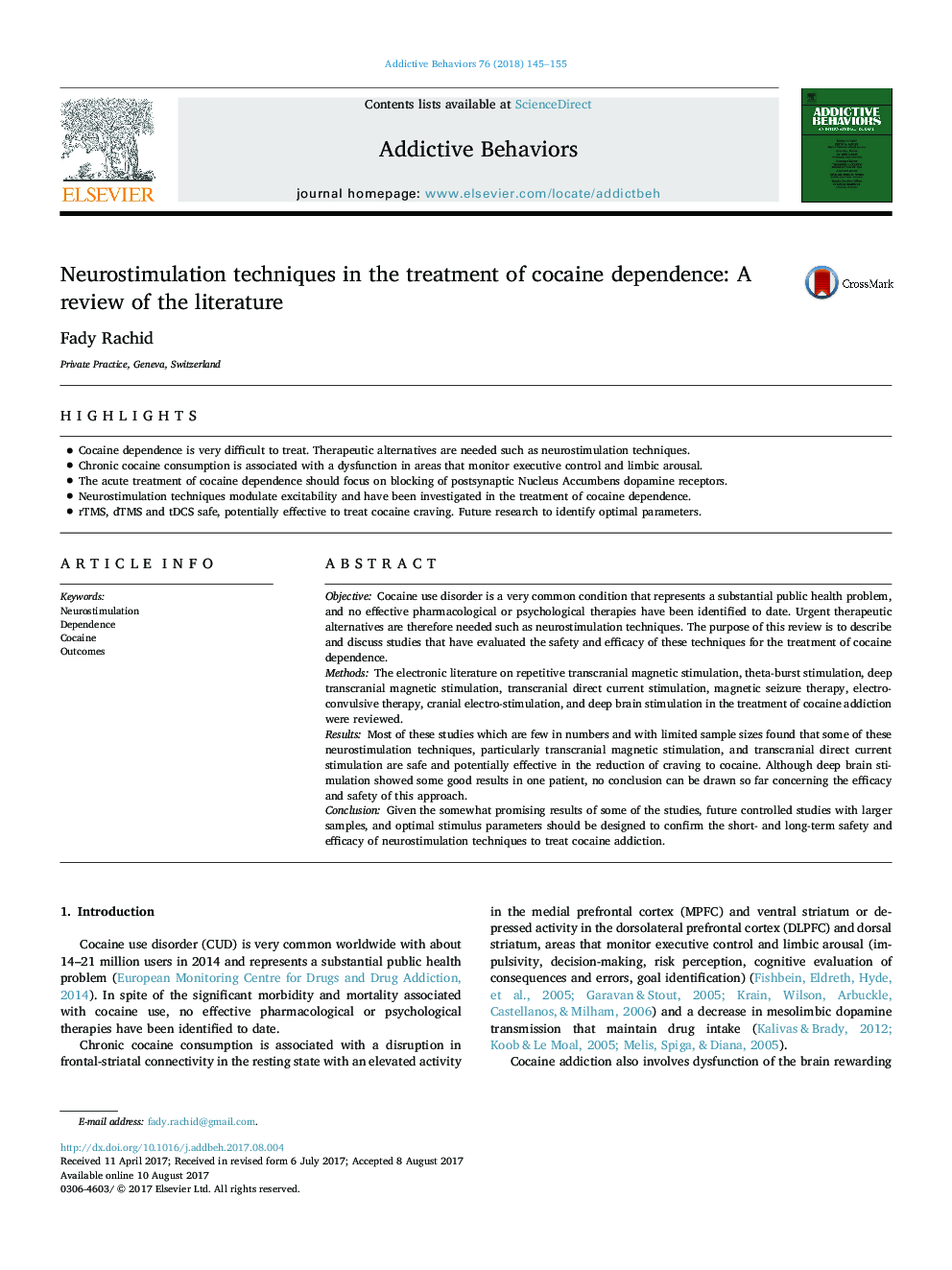| کد مقاله | کد نشریه | سال انتشار | مقاله انگلیسی | نسخه تمام متن |
|---|---|---|---|---|
| 5037599 | 1472495 | 2018 | 11 صفحه PDF | دانلود رایگان |
- Cocaine dependence is very difficult to treat. Therapeutic alternatives are needed such as neurostimulation techniques.
- Chronic cocaine consumption is associated with a dysfunction in areas that monitor executive control and limbic arousal.
- The acute treatment of cocaine dependence should focus on blocking of postsynaptic Nucleus Accumbens dopamine receptors.
- Neurostimulation techniques modulate excitability and have been investigated in the treatment of cocaine dependence.
- rTMS, dTMS and tDCS safe, potentially effective to treat cocaine craving. Future research to identify optimal parameters.
ObjectiveCocaine use disorder is a very common condition that represents a substantial public health problem, and no effective pharmacological or psychological therapies have been identified to date. Urgent therapeutic alternatives are therefore needed such as neurostimulation techniques. The purpose of this review is to describe and discuss studies that have evaluated the safety and efficacy of these techniques for the treatment of cocaine dependence.MethodsThe electronic literature on repetitive transcranial magnetic stimulation, theta-burst stimulation, deep transcranial magnetic stimulation, transcranial direct current stimulation, magnetic seizure therapy, electroconvulsive therapy, cranial electro-stimulation, and deep brain stimulation in the treatment of cocaine addiction were reviewed.ResultsMost of these studies which are few in numbers and with limited sample sizes found that some of these neurostimulation techniques, particularly transcranial magnetic stimulation, and transcranial direct current stimulation are safe and potentially effective in the reduction of craving to cocaine. Although deep brain stimulation showed some good results in one patient, no conclusion can be drawn so far concerning the efficacy and safety of this approach.ConclusionGiven the somewhat promising results of some of the studies, future controlled studies with larger samples, and optimal stimulus parameters should be designed to confirm the short- and long-term safety and efficacy of neurostimulation techniques to treat cocaine addiction.
Journal: Addictive Behaviors - Volume 76, January 2018, Pages 145-155
